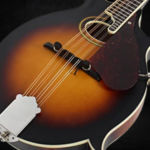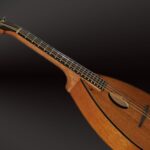It can be difficult trying to find the best acoustic guitar amps. Your acoustic guitar is unique, and it needs a special amplifier. You can’t plug your regular acoustic guitar into a standard electric guitar amplifier.
Your acoustic guitar needs an amplifier that’s dedicated to your acoustic guitar. Some electric guitar amplifiers do have channels that will accept acoustic guitars, but many of them do not. Make sure your amplifier has this setting.
Quick Look: Best Acoustic Guitar Amps
★ #1 Best Acoustic Guitar Amp Overall: Marshall Soloist ★
- Best Cheap Acoustic Guitar Amp: Fender Acoustasonic
- Best Acoustic Guitar Amp Under $1,000: Rivera Sedona
- Best Acoustic Guitar Amp Under $500: Boss Katana MKII
This guide will help you find a great acoustic guitar amplifier to get what you need to sound excellent on your instrument.
Acoustic Guitar Accessories
Acoustic Guitar Accessories
Best Acoustic Guitar Strings
Best Acoustic Guitar Amps
Best Acoustic Guitar Tuners
Best Acoustic Guitar Cases
Best Acoustic Guitar Pickups
Best Beginner Acoustic Guitar Books
Best Acoustic Guitar Accessories
Best Guitar Cases For Flying
Best Microphones For Acoustic Guitar Recording
Best Guitar Books for Beginners
What Is an Acoustic Guitar Amp?
An acoustic guitar amplifier is an amp that is dedicated to your acoustic guitar. Some people think that you can plug your regular acoustic guitar into an electric guitar amplifier, but this is not the case.
The electric guitar amplifier won’t be able to process the signal effectively from the acoustic guitar, and you may even damage the speaker. This is why you need a dedicated acoustic guitar amplifier.
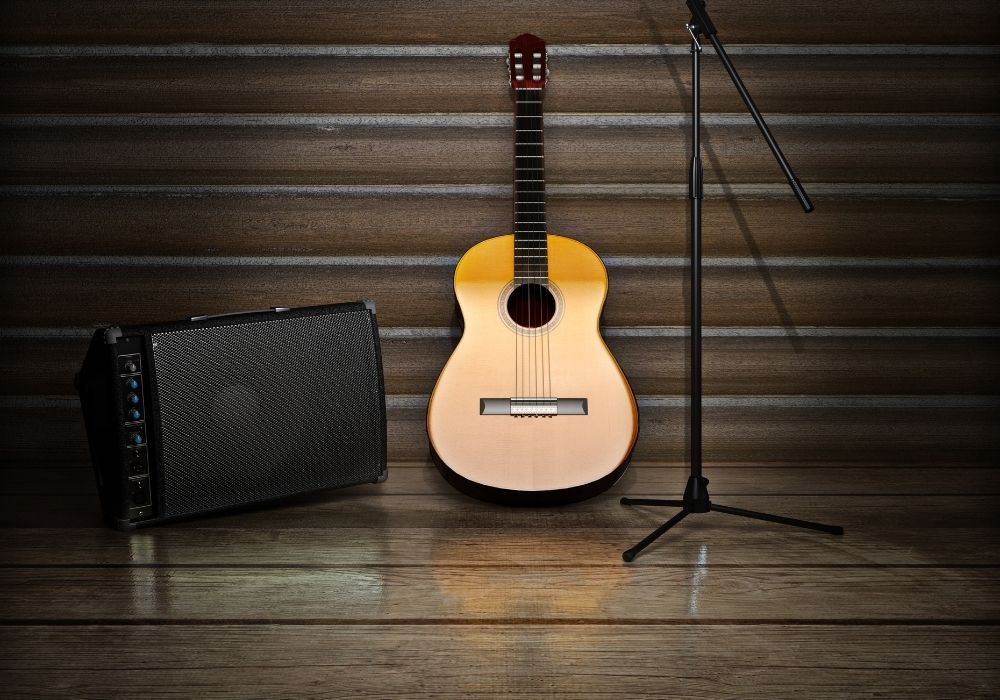
This guide will help you pick out the best acoustic guitar amps to meet your current needs. You have a lot of choices on the market, and there’s something out there for everyone.
Types of Acoustic Guitar Amps
Here’s a listing of the different types of acoustic guitar amps that you can buy. You have a wide range of different choices, so you have to decide upon something that meets your individual needs.
Tube Amp
A tube amplifier is an amplifier that uses transistor tubes. These are the same transistor tubes that used to be in stereos and radios. Although the technology is old, many guitar players prefer tube amplifiers for the tone.
Keep in mind that tubes can wear out, and replacing them can be expensive. The advantage of a tube amplifier is that you get an amazing tone that you can’t get out of other amplifiers.
Solid State
A solid state amplifier is an amp that uses solid state circuitry. Semiconductor circuits inside the amplifier help produce the sound. There’s a speaker cabinet used for the amplification. These amps are quite common.
The advantage of a solid state amplifier is that you don’t have to worry about tubes burning out. They’re very easy to take with you to gigs or lessons. These amplifiers have gotten a lot better from the early days and have a sound close to tube amps.
Acoustic/Electric Amp
Some electric amplifiers also have acoustic settings. This allows you to use the amplifier with both your electric guitar and your acoustic guitar. Some newer digital amplifiers have dedicated channels for acoustic guitars.
The acoustic channels for some amps are quite basic. You won’t have all the options that a dedicated acoustic amplifier has. The advantage of this type of amp is that you don’t need different amps for both guitars.
See More: Best Electric Guitar Amps Buyer’s Guide
Combo
A combo amplifier is a combination of a speaker and an amplifier head. This is a common type of amplifiers. There’s no need for a separate amplifier cabinet and amp head, as they’re both in one unit.
A combo amplifier is a nice option for playing on small stages because you don’t have to carry around separate cabinets or an amplifier head, which are heavy and cumbersome. A lot of combo amps can run 50 to 100 watts.
Amp Modeler/Digital
An amp modeler is a new type of amplifier that uses digital circuits. These amplifiers recreate the sounds of classic amps from the past, such as those from the 1960s or 70s. These amps also tend to come with plenty of built-in effects.
The advantages of digital amplifiers are that they often come with built-in effects, and they model expensive amplifiers from the past that are really expensive. They’re also easy to set up with computers for recording purposes.
Mini or Travel
You can also buy amps that are quite small, perfect for traveling or using while you’re camping. These amps run on batteries, so they’re quite portable. They tend to have built-in effects and other handy features.
Travel amplifiers and other smaller amplifiers are nice for beginners who want to take them to lessons or for those who want to go camping or take a trip and don’t want to carry around a heavy amplifier.
Stack Amp
The stack amplifier is a large amp that’s mainly used in stadiums or other large venues. They usually consist of a couple of speaker cabinets along with an amplifier head. This type of setup is not practical for home use.
Things to Consider When Choosing an Acoustic Guitar Amp
There are several things that you need to keep in mind before you buy an acoustic guitar amplifier.
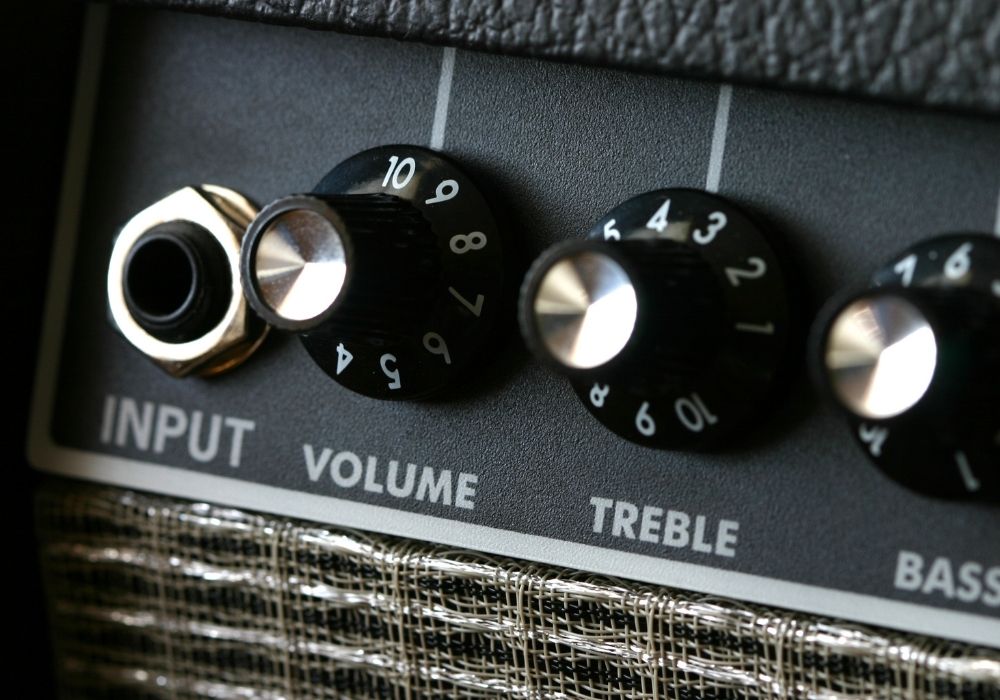
Remember that you need a dedicated amp for your acoustic guitar, so you can’t buy an electric guitar amp.
Size
The size of your amplifier is important. A small combo amp is easy to carry around, but as you go up in size, they get heavier. You’ll have to determine the size of the amplifier that you want.
As you add more watts to an amplifier, you’re going to add a lot of weight. You might not want this if you’re a beginner player, as the amp will be cumbersome to move around.
Sound
The sound is another factor that you have to consider. You want something that is going to sound good. A lower-priced amplifier may not give you the sound you want, so you might have to spend a little extra.
Many amplifiers have built-in effects, which can change your sound to something that is more pleasing to you. The sounds that you get will be a combination of your amplifier, guitar, and the acoustic guitar strings that you use.
Effects
You may want an amplifier that has some built-in effects such as reverb and chorus, which can go along quite nicely with an acoustic guitar. Not every amplifier has effects built into it.
While some effects on amplifiers sound great, some of them are not all that good. You may want to experiment with guitar effects pedals, which tend to have a better tone when compared to a lot of the digital effects.
Outputs
You may be concerned about the outputs on the amplifier. For example, you may want an output that attaches to a larger speaker cabinet or one that allows you to hook up to your computer for recording purposes.
Some amplifiers have a dedicated output for a microphone, so you can use the amplifier to sing along with your acoustic guitar. Not every amplifier has these features, so you have to take a look before you buy.
10 Best Acoustic Guitar Amps
Here is what I consider to be the best 10 acoustic guitar amps overall. These are all my personal selections, so you might have something different in mind according to your own taste.
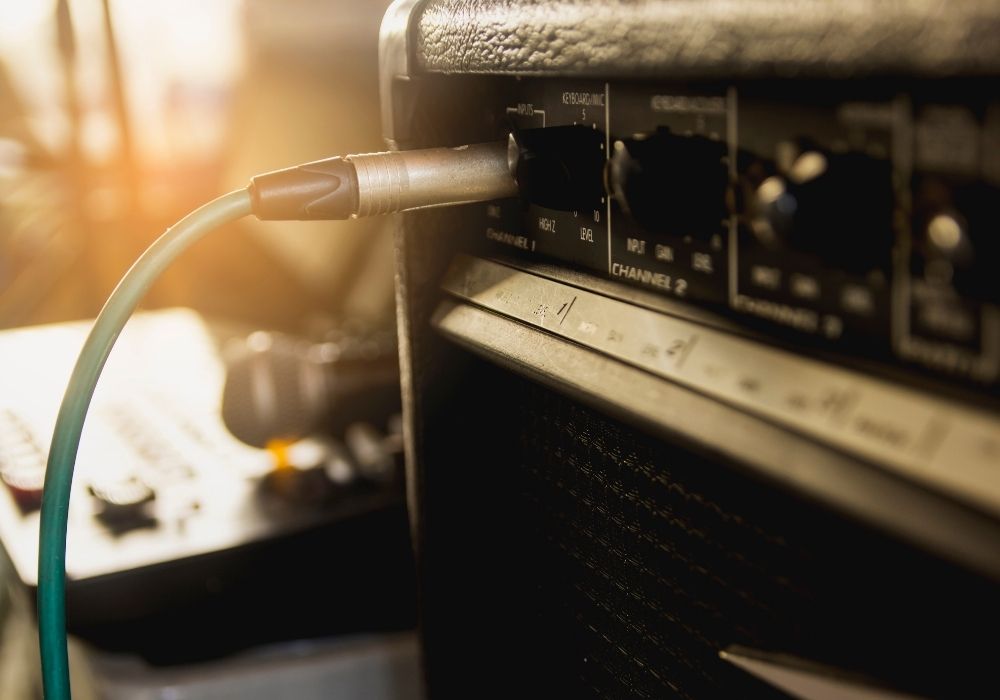
These amps are suitable for all playing levels.
 1. Fender Acoustasonic 15 Watt
1. Fender Acoustasonic 15 Watt
- Watts: 15
- Type: Solid state
- Tubes: No
- Effects: Chorus
- Speakers: 1 x 6″ Fender speaker
The Fender Acoustasonic 15-watt amplifier is the perfect solution for beginner players looking to amplify their acoustic guitar. You get a great tone, a nice chorus effect, and a headphone output jack for practicing.
✅ Chorus
✅ Mic/guitar input
✅ Headphone jack
✅ Good price
❌ Low wattage
❌ No reverb
Why I Recommend It
I like the Fender Acoustasonic 15 amplifier for beginners. This amp has a great tone, and it has a lot of features that you wouldn’t expect for a low-cost amp. This one has a nice chorus effect as well as an input for a microphone.
It comes with a headphone jack as well as a full equalizer with bass, treble, and middle. It provides excellent value, and you’re not going to spend a whole lot on this amplifier for your acoustic guitar.
 2. Positive Grid Spark
2. Positive Grid Spark
- Watts: 40
- Type: Digital
- Tubes: No
- Effects: Multiple
- Speaker: 2 x 4″ custom
The Positive Grid Spark is a unique amplifier. It offers you thousands of built-in effects and amplifier models. You can use the chord feature to learn chords from songs, so you can practice along. It’s easy to record with the USB interface.
✅ Great tone
✅ Unique amp
✅ Lots of effects
✅ Good practice tool
❌ A bit hard to use
❌ Expensive
Why I Recommend It
The Positive Grid Spark works with both acoustic and electric guitars. This is a unique new product, and I love the fact that you can use it to learn songs, as it displays chords through a smart app, one of its best features.
It gives you realistic tones of different amplifiers and effects. There’s a built-in tuner, and it’s 40 watts, so you can use it for small gigs. It will learn your style and provide bass and drum patterns for you to jam along with.
 3. Marshall Acoustic Soloist
3. Marshall Acoustic Soloist
- Watts: 50
- Type: Solid state
- Tubes: No
- Effects: Chorus and reverb
- Speaker: 2 x 8″ Celestion
Marshall Acoustic Soloist is an excellent mid-range amplifier for any acoustic guitar player. You get 50 watts of power, chorus and reverb effects, and two 8-inch Celestion speakers for great sound. You can use the included mic input to sing along.
✅ Great tone
✅ Two effects
✅Effects loop
✅ Mic input
❌ Expensive
❌ May confuse beginners
Why I Recommend It
I’ve used Marshall amplifiers in the past, and this is an excellent amp for acoustic players. The amplifier has two channels with dedicated volume, bass, and treble controls, so you can shape your sound.
This app has both a reverb and a chorus effect and an effects loop for other pedals. There’s a dial to reduce amplifier feedback. There are a couple of auxiliary inputs for various devices, along with a microphone input jack.
 4. BOSS Acoustic Singer Live
4. BOSS Acoustic Singer Live
- Watts: 60
- Type: Digital
- Tubes: No
- Effects: Delay/reverb/chorus
- Speaker: 50-watt woofer, 10-watt tweeter
The BOSS acoustic singer live is an excellent amplifier for playing in any gig situation. You get 60 watts of power along with delay, reverb, and chorus effects. There’s an input for connecting to a USB so you can do some recording.
✅ Multiple effects
✅ Fights feedback
✅ USB jack
✅ Vocal/guitar channels
❌ Expensive
❌ Not for beginners
Why I Recommend It
I’ve used Boss products in the past and was always happy with my purchases. This is an excellent acoustic amplifier. It has a microphone as well as a guitar input channel so you can sing along while playing.
Each channel has an equalizer, so you can sculpt the sound the way you want. You can add in effects to further enhance your sound and reduce feedback by using the feedback knob. The back of the amp has inputs for other devices.
 5. Roland Mobile-AC Battery Powered Acoustic Amp
5. Roland Mobile-AC Battery Powered Acoustic Amp
- Watts: 5
- Type: Travel
- Tubes: No
- Effects: Chorus/reverb
- Speaker: 2 x 4″
The Roland Mobile-AC is an excellent travel or practice acoustic amplifier. You get 5 watts of power along with chorus and reverb effects. You can use the mic jack to plug in a microphone and the headphone jack for practicing.
✅ Reverb and chorus
✅ Portable
✅ Easy operation
✅ Mic input
❌ Low power
❌ Need to buy an adapter
Why I Recommend It
I like that this amplifier is small enough to take with you when traveling or going camping. It’s easy to amplify your acoustic guitar with this setup. It has a great tone, and the batteries last a long time.
I also like the fact that you get both reverb and chorus effects in such a small amplifier. Many larger amps don’t offer these. The controls on this amp are easy to use, so it’s the perfect first amp for any beginner acoustic player.
6. Rivera Sedona 55 ES Acoustic Tube Amp
- Watts: 55
- Type: Travel
- Tubes: 5 x 12AX7s, 2x EL34s
- Effects: Spring reverb
- Speaker: Celestion T75
The Rivera Sedona 55 ES Acoustic Tube Amp is an excellent option for both acoustic and electric players. It’s powered by tubes, so you get an excellent warm tone. It has a superb Celestion speaker along with a spring reverb for a vintage sound.
✅ Both electric/acoustic compatible
✅ Tube powered
✅ Spring reverb
✅ 50 watts
❌ Expensive
❌ Tubes can wear out
Why I Recommend It
The Rivera Sedona is one standout amplifier. I like the fact that you can use it with both your acoustic and electric guitar. It has that vintage spring reverb effect most players love. There is enough power for many small gigs.
The amp has an equalizer that helps fight feedback, so your acoustic guitar rings nice and clear. There’s a footswitch included, and the amplifier has an effects loop so you can hook it up to your pedals.
 7. Fender Acoustic Junior
7. Fender Acoustic Junior
- Watts: 100
- Type: Combo/digital
- Tubes: No
- Effects: Multiple
- Speaker: 12″ Fender
The Fender Acoustic Junior is a 100-watt amplifier with plenty of different applications. It comes with multiple digital effects such as delay, reverb, chorus, and more. You can use the USB jack to connect it to your computer for easy recording.
✅ Plenty of effects
✅ Lots of tones
✅ USB input
✅ Two channels
❌ Expensive
❌ Some may not like digital effects
Why I Recommend It
This Fender Acoustic Junior has a lot going for it. I like the fact that it has multiple different effects that you can use with your acoustic guitar. It includes delay, reverb, chorus, echo, and vibratone, so you have plenty of sound options.
Since you have 100 watts of power available, this is the perfect amplifier for a larger gig where you need extra amplification. It has line outs so you can use it with a PA system, if you prefer. You can use the loop function to work on ideas.
 8. Blackstar FLY3 Acoustic Amp
8. Blackstar FLY3 Acoustic Amp
- Watts: 3
- Type: Digital
- Tubes: No
- Effects: Tape delay
- Speaker: 3″
The Blackstar FLY3 acoustic amplifier is the perfect practice companion for any beginner guitarist. It gives you a great tone at a reasonable price. You can sculpt your sound with the equalizer and use the line in to connect to your device for practicing.
✅ Portable
✅ Easy operation
✅Good tone
✅ Outputs for devices
❌ Low power
❌ Not many features
Why I Recommend It
I like this amp because of its simple operation. You get treble, bass, and volume controls, as well as an echo effect in one compact unit. You can take it with you to practice, to the beach, and so on. You can connect to your device for practicing.
It’s a great amplifier for anyone taking lessons as it’s small enough to fit almost anywhere. It gives you a great acoustic tone when you want it. This is one of the best small acoustic guitar amps for beginners.
 9. YAMAHA THR10II Desktop Amp
9. YAMAHA THR10II Desktop Amp
- Watts: 20
- Type: Digital/amp model
- Tubes: No
- Effects: Multiple
- Speaker: 2 x 3″
Use the Yamaha THR 10II for both your acoustic and electric guitar. This unit features multiple amp models and effects, and you can hook it up to USB to do some recording. You can take it with you, as it runs on both an outlet and battery power.
✅ USB connection
✅ Multiple effects
✅ Electric/acoustic capable
✅ Amazing tone
❌ Battery power drains fast
❌A bit expensive
Why I Recommend It
I have one of the older THR amps, and I’m impressed by the tones you get out of this amplifier. It has a dedicated channel for acoustic guitars, and you can use it with your electric guitar as well. It’s easy to set up and record with.
I like the fact that it’s portable, so you can take it with you to lessons, the beach, and so on. You get a remote editor app to change settings via your computer to get the tones you want.
 10. BOSS Katana KTN 50 MKII
10. BOSS Katana KTN 50 MKII
- Watts: 50
- Type: Digital/Amp model
- Tubes:
- Effects: Multiple
- Speaker: 12″
The BOSS Katana 50 MKII has everything you want in an acoustic and electric amplifier. It comes with multiple effects and different amp models. There is a dedicated model for your acoustic guitar and different power settings.
✅ Multiple effects
✅ Acoustic/electric compatible
✅ 50 watts
✅ Lower power settings
❌ A bit complicated
❌ Software is finicky
Why I Recommend It
I own the first version of the BOSS Katana, and it’s an excellent amplifier. I like the fact that it has a different power setting, so you don’t have to use the full 50 watts. You can send it to lower power for quieter practicing.
The digital effects that come with this model sound great with your acoustic guitar. You can download special software to play around with the settings to get your own tones. This amp makes your acoustic guitar sound great.
Best Acoustic Guitar Amp Brands
There are several different brands of acoustic guitar amplifiers. It’s best to go with the major brands, since they make amplifiers that will make your acoustic guitar sound its best.
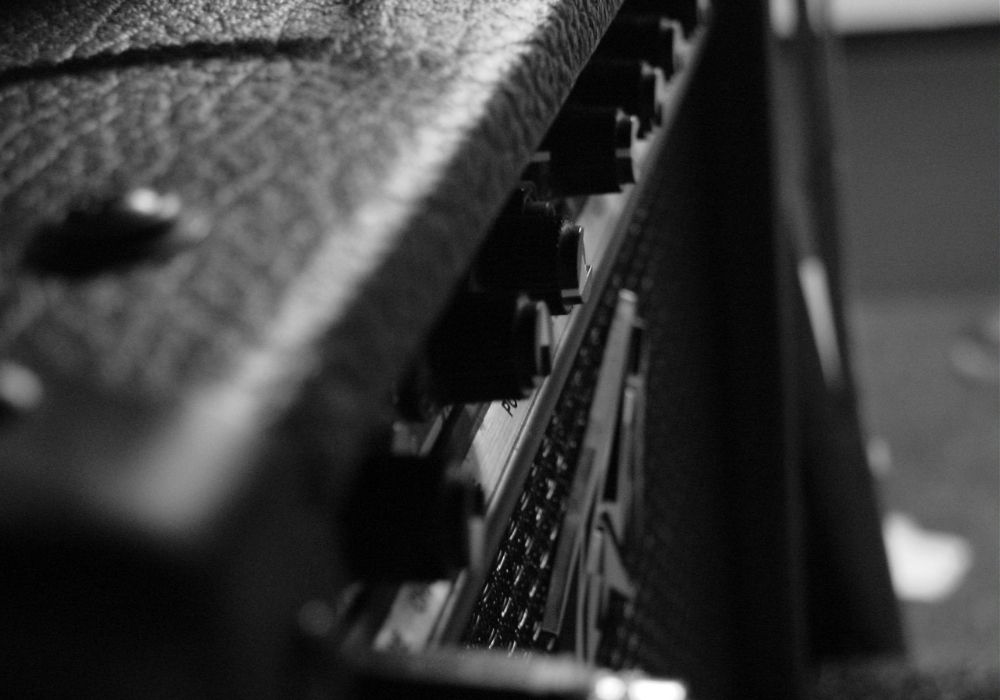
Here are some of the major brands.
Fender
Fender is known for excellent electric amplifiers, and they also make a wide range of acoustic amplifiers that sound just as great. A lot of the amplifiers have built-in effects and other options to help you sculpt your sound.
Rivera
This company has the excellent Sedona line of acoustic amplifiers that work as electric amplifiers as well. These amps run on tube power, so you get an excellent vintage tone.
Yamaha
I’m a big fan of the Yamaha THR series of amplifiers. These small practice amplifiers have a nice dedicated model channel for your acoustic guitar and built-in effects.
BOSS
BOSS has the excellent Katana line of amplifiers. This amp has its own channel for acoustic guitars, but it has electric guitar settings as well. You have multiple effects that you can change up to get different tones.
Marshall
Marshall is known for its electric amplifiers, and it also has the excellent Marshall acoustic soloist amp, which is dedicated to acoustic guitars. It sounds great.
Acoustic Guitar Amp Aesthetics & Build
There are a few things you need to know prior to picking up your acoustic amplifier. Here is what you need to know before you buy.
Type
You should have an idea of the type of amplifier you want. Mini acoustic amplifiers today are digital, but don’t let that scare you. This allows you to create a lot of different tones without needing a bunch of expensive equipment.
You’ll spend more if you go for a tube amplifier, but you’ll get that vintage tone a lot of players like. You’ll also find a wide range of smaller practice amplifiers that make it easy for the practicing guitarist.
Effects
While effects aren’t necessary for acoustic guitar, they can help you sculpt your sound to something that you like. Effects such as reverb or a bit of chorus sound great on acoustic guitars. You might want an amp that has these.
Wattage
You’ll probably need to look at the amplifier wattage prior to ordering. You’re not going to need a hundred-watt amplifier if you’re a new player and just practicing a few chords. More power means a more expensive amplifier.
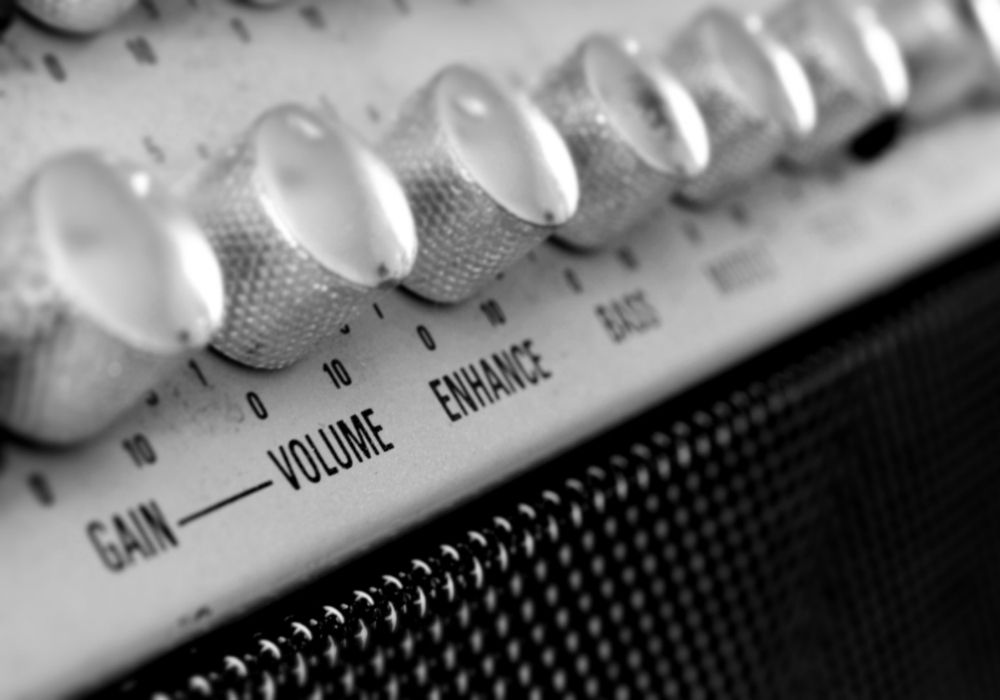
Beginners probably need around 10 to 25 watts at the most. If you’re playing on stage, you’ll probably want an amplifier that’s 40 watts and up. Try to get something that meets your current playing level.
Outputs
You may want to look at the amplifier to see what type of outputs it has. For example, you might want a USB port if you plan to record with your computer. You might want a headphone jack or some other outputs for various devices.
Software
Be aware that some amplifiers today use certain software. It might become outdated quickly, and it’ll have to be updated, which can take time. Some software may be quickly replaced, and you may need a new amplifier to use it.
Buying New vs. Used
It’s probably a good idea to buy your amplifier new. You don’t know what you’re getting when you buy a used amplifier. If it has tubes, these may have to be changed, and it’s going to cost you extra.
If you do decide to buy an older amplifier, make sure you know something about amplifiers or have someone that does go with you to check out the amplifier prior to your purchase.
What’s in the Acoustic Guitar Amp Box?
When you buy an acoustic guitar amplifier, there may be several things in the box that you should be aware of.
Documentation
Most amplifiers ship with some sort of documentation. It can show you how to use the effects, inputs, and the various other controls on your amp.
Cables
Your amplifier should ship with cables for not only the power supply but also the USB, if your amplifier happens to connect to a computer. Make sure all of these cables are in the box.
Footswitch
If your amplifier shipped with a footswitch, you should find this in the box as well. Not all amps come with a footswitch, and you sometimes have to buy this separately.
Extras
There are a few things that you’re probably going to want to buy along with your acoustic guitar amplifier to ensure that you get the best use out of it. Here are a few considerations.
- Guitar cable: You need to make sure that you have an excellent guitar cable, as this will improve the tone of your amp.
- Effects: You may want some guitar effects to enhance the sound of an amplifier if it doesn’t already have built-in effects.
- Acoustic pickup: If your acoustic guitar doesn’t have a pickup built into it, you’re going to have to get one for it.
Frequently Asked Questions:
Here are some frequently asked questions that people ask about the best acoustic guitar amps. It’s important to understand what you are getting before you purchase, so you get something that works for you.
How Many Watts Do I Need?
For acoustic guitar, you can probably get by with between 10 and 20 watts for practicing. If you’re going to be playing live, you’re going to want around 40 watts and above. You’ll need more power if you’re going to play a larger gig.
What Amp Type Is Best?
The type of amp you buy will depend upon your needs. Tube amps can sound great, but they might be a little bit too expensive. Amp modelers have come a long way, and this might be something that you should consider.
A combo amplifier tends to give you the best of both worlds, as you’ll have everything you need in one unit. You should listen to several amplifiers to determine what you like the best.
Do I Need Effects?
You don’t necessarily need an amplifier with built-in effects, as you can use an effects pedal if you want. Effects such as chorus and reverb can enhance the tone of your acoustic guitar, but they’re not 100% necessary.
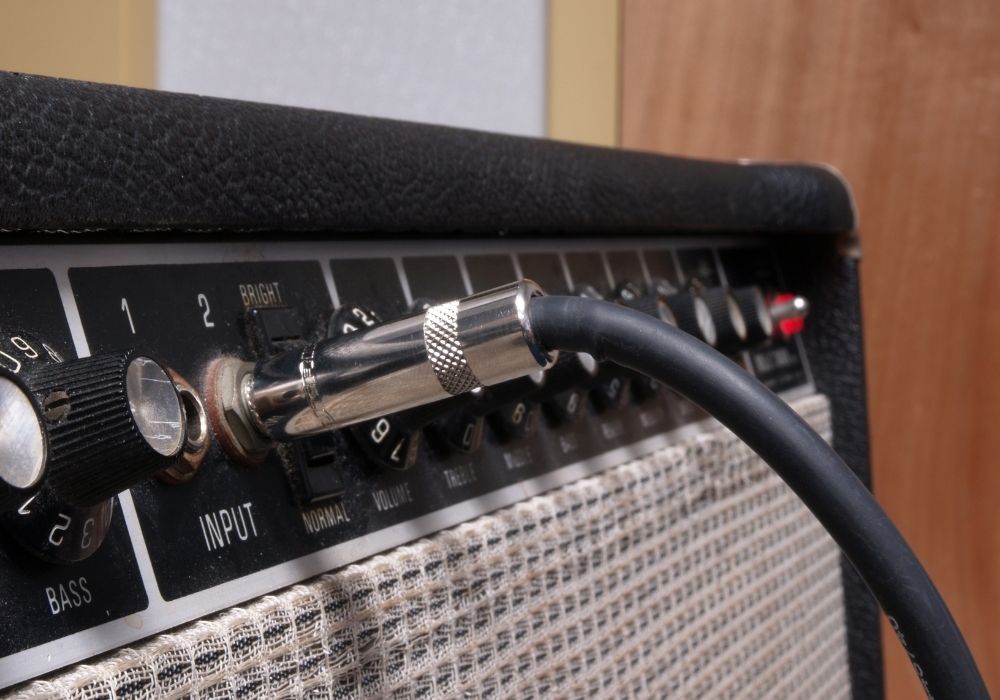
You can also get amplifiers that have guitar effects loop. This allows you to hook up a regular guitar pedal to use with your acoustic amplifier. Keep in mind that not every amplifier has an effects loop.
How Much Do Acoustic Guitar Amps Cost?
Here are some various price ranges that you can expect to pay for an acoustic amplifier. This varies depending upon the make and the model.
- Beginner: $75-$200
- Intermediate: $200-$500
- Advanced: $500+
What Are the Best Acoustic Guitar Amps?
Here are three of the top acoustic guitar amplifiers that I consider you should purchase. These are designed for all playing levels.
BOSS Katana MKII: Best for Beginners
I’m happy with my BOSS Katana MKII. It has a dedicated channel for an acoustic guitar. It’s easy to use multiple effects with an acoustic guitar to get the sounds that you want.
Positive Grid Spark: Best for Intermediate Players
The Positive Grid Spark amp has a dedicated channel for acoustic guitars and plenty of built-in effects and amp models. You can also use it for practicing, as it will enhance chords from songs, and you can record with this excellent amplifier.
Marshall Acoustic Soloist: Best for Professionals
The Marshall Acoustic Soloist amplifier has plenty of options for the professional player. A mic jack is included so you can sing along while playing. It has both chorus and reverb effects that further round out your tones.
Where Are the Best Acoustic Guitar Amps Made?
Most of the best acoustic guitar amplifiers are made in the United States, but there are other manufacturers such as BOSS and Yamaha overseas, which are also making great products. These companies also have US divisions.
Where to Buy Acoustic Guitar Amps
There are a few places where you can purchase acoustic guitar amplifiers. Here are some of the best choices when it comes time to pick up your new amplifier.
Amazon
I buy a lot of my musical products through Amazon. They have a great selection, good prices, money-back guarantees, and you can read the reviews to see what others think of the product before you buy.
Online Music Retailers
Other options include Sweetwater and Guitar Center. Both of these companies offer a great selection, fast shipping, and excellent customer service.
Your Local Music Store
You can also find an acoustic guitar amplifier at your local music store. You might have difficulty finding something specific at your store, as they can’t carry everything in stock all at once.
Review This Post
Table of Contents
- Acoustic Guitar Accessories
- What Is an Acoustic Guitar Amp?
- Types of Acoustic Guitar Amps
- Things to Consider When Choosing an Acoustic Guitar Amp
- 10 Best Acoustic Guitar Amps
- Best Acoustic Guitar Amp Brands
- Acoustic Guitar Amp Aesthetics & Build
- Buying New vs. Used
- What’s in the Acoustic Guitar Amp Box?
- Frequently Asked Questions:
- Where to Buy Acoustic Guitar Amps
- In Conclusion
In Conclusion
Thank you for reading this guide to the best acoustic guitar amps. There’s a wide range of different amplifiers that will make your acoustic guitar sound great.
Please like, share, and leave a comment on this article. I look forward to hearing from you. Now, go plug in your acoustic guitar and rock out with your new amplifier.











